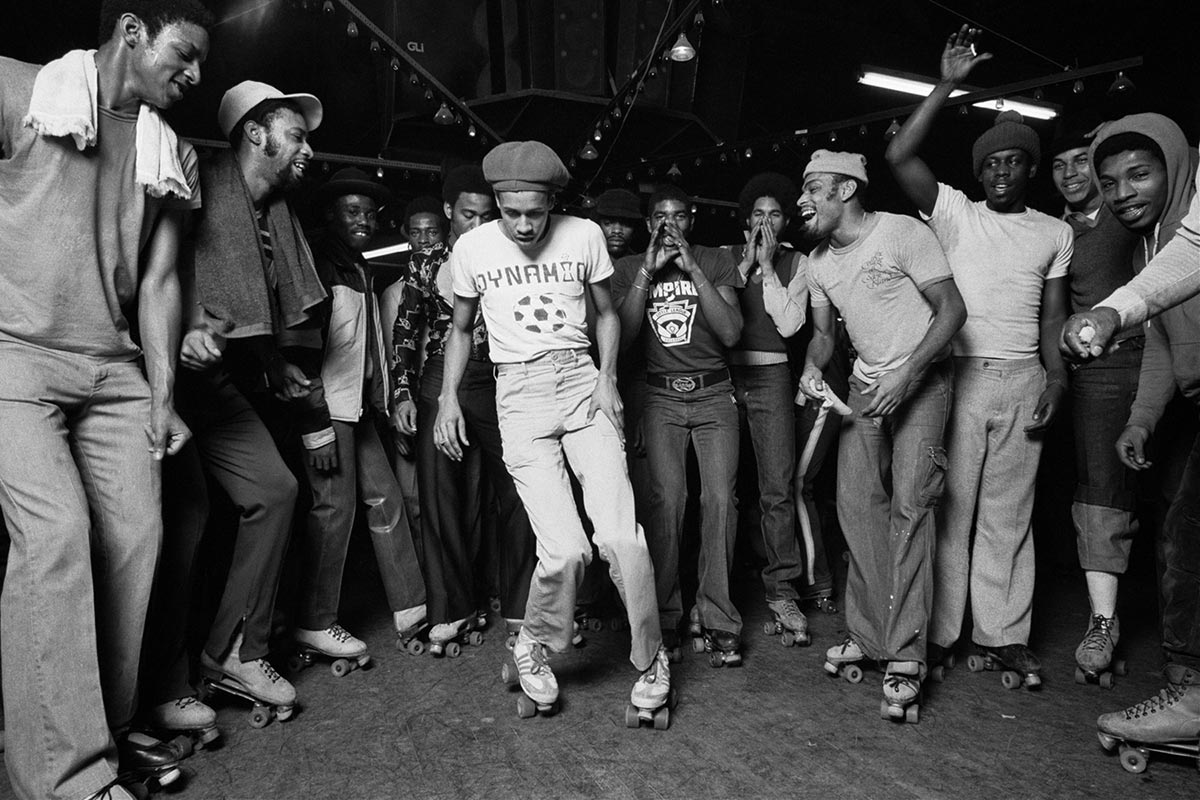Bounce, Rock, Skate, Roll
Book review: “Empire Roller Disco” captures the 1980 skating scene from one night in Crown Heights
6.5.2023

On a cold February night in 1980, Patrick D. Pagnano captured images that record a moment and place in time—the skating scene at Brooklyn’s Empire Roller Disco, formerly the Empire Rollerdome, which opened in 1941 in Crown Heights. In January 2018, Benrubi Gallery in New York City curated a solo exhibition of the series. It was the final show of Patrick Pagnano’s work before his death that year at age 71. Pagnano’s wife, Kari Pagnano, helped bring the collection to print this year in the book “Empire Roller Disco,” published by Anthology Editions.
The self-proclaimed “birthplace of roller disco,” the Empire Roller Disco was the first rollerdome to feature a live DJ, transforming the rink into the Studio 54 of the roller-skating world with a 20,000-watt stereo and disco lighting system installed by sound-club designer Richard Long. While the comparison evokes glitz, glamour, and fame, Pagnano’s images show a more real-world scene, a place where people gathered to have fun and, as described in the book, “bounce, rock, skate, roll” to the disco and funk vibes of the time.

In a fascinating introduction, Brooklyn writer and editor Miss Rosen describes Pagnano’s origins and how he came to be a photojournalist. She writes of the Empire Roller Disco’s history as well as its special place in the community.
From the introduction by Rosen:
Pat was aware that the true value of photography was its ability to act as both art and artifact, and he understood the importance of delving beyond the surface of his subjects to tell stories of people and places. Journalism, Pat knew, is the first draft of history, and he placed a premium on informing, rather than entertaining, the public. “As a photographer, Pat felt he had a tremendous responsibility to be truthful; because it was such a powerful medium, [which] could be used to manipulate,” Kari says. “While attending a rally in New York City early in his career, Pat was shocked to see what he observed and what ended up in the news—a total exaggeration of the actual events. He was very disappointed by the manipulation in journalism.”
Pat maintained a reverence for his subjects, taking tremendous care to present them with dignity and respect. “I do not want to demean, look down on, judge, ridicule, or impose preconceived notions of what or who a person is,” he said. “I also use the environment or juxtapositions to enhance the narrative and reveal something of human nature or the ambiguity of the human condition. My goal is to capture what is the essence of their personality, often by very subtle body language or details in the way they choose to dress and present themselves.”
The book features black pages with white print and the collection of black-and-white images, also printed on black, from that night at the Empire Roller Disco. The photographs capture a time capsule of a period when disco had peaked but before AIDS changed the social landscape of the country. You can see it in the white piped trim on short shorts, in the playful cowboy hat and toy gun accessories, in the hair styles and hats and velour. In the almost entirely Black crowd of skaters present that night, you can almost feel what it was like to bounce-roll to the music and skate your best moves.
Photos from “Empire Roller Disco” are on display at the Ace Hotel gallery in Brooklyn through July 29.
Joan Sherwood is a senior editor.

 View Gallery
View Gallery